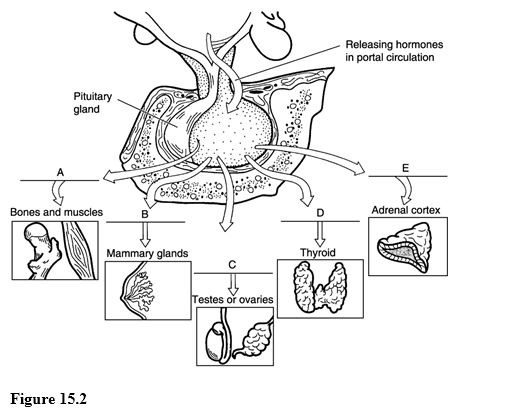The study of the body's organization by areas is
A. systemic anatomy.
B. regional anatomy.
C. molecular biology.
D. microbiology.
E. surface anatomy.
B
You might also like to view...
The skull and vertebral column are part of the ________ skeleton
A) axial B) apical C) appendicular D) articulated E) sagittal
A chemical that is secreted by a cell to act on cells in its immediate vicinity is called a(n) ________.
Fill in the blank(s) with the appropriate word(s).
Using Figure 15.2, match the following hypothalamic hormones with the pituitary hormone targets:

1) Growth hormone-releasing hormone (GHRH).
2) Gonadotropin-releasing hormone (GnRH).
3) Prolactin-releasing hormone (PRH).
4) Corticotropin-releasing hormone (CRH).
5) Thyrotropin-releasing hormone (TRH).
Susan slipped on the ice and was unable to be fully mobile for several days. What disruption to homeostasis would you predict she experienced during her immobile period in terms of her muscular system?
A. Susan's uninjured muscles overcompensate for the inactive ones by contracting spontaneously. B. Susan was more cold than usual because her inactivity prevented her muscles from helping to regulate her body temperature. C. Susan's metabolic rate was raised, and it initiated sweating.